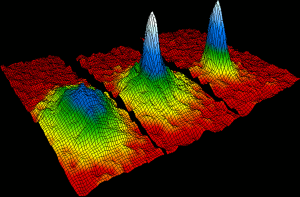
Classical physics suggests that at absolute zero, particles cease all motion. But what about quantum mechanics, the science of the very small? Ah, therein lies the rest of the story.
From Gas to Frigid Solid
It is well established fact that heated gas atoms or molecules move with great vigor. In fact, gas expands as energy increases, due to increased particle momentum. The reverse is also true. Cool a gas and it shrinks. Particle motion decreases. Particle momentum decreases. The atoms or molecules come closer together. At some point a liquid forms.
Cool the liquid further and the result is a solid. Keep cooling the solid, and in theory it is possible to reach the coldest known temperature. That temperature is absolute zero degrees Kelvin. What happens then? Does all atomic or molecular motion stop?
Absolute Zero Degrees Kelvin
Despite the predictions of classical physics, at absolute zero degrees Kelvin all motion will not cease. The remaining motion is called “zero point vibrational energy.” It is defined as the quantum ground state of all matter. The phenomenon is described by the Heisenberg Uncertainty Principle, which dictates one cannot simultaneously describe the position and momentum (mass times velocity) of any particle.
Value of the Zero Point Energy
Momentum is equal to mass times velocity. If the velocity of all particles at absolute zero was zero, the momentum would be zero. The location of each particle would be known absolutely. This would violate the Heisenberg principle. In fact, the zero point energy is equal to one-half the value of Planck’s constant times the frequency of the vibration of the harmonic oscillator (the particle) at absolute zero. The frequency depends upon the mass of the particle. See the references cited at the end of this article for specifics.
An Interesting Result for Helium-4
The most abundant form of helium is helium-4. The nucleus of helium-4 contains two protons, two neutrons. At 2.17o Kelvin, helium-4 becomes super fluid. However, the zero-point vibrational energy for helium-4 is greater than the energy the substance would have in a solid lattice. So it cannot be converted into a solid, being the only known substance to fall into that category. There is no classical theorem to explain this. Only quantum mechanics describes such behavior. Liquid helium can be frozen if approximately 25 atmospheres of pressure are applied in the process.
Note: You might also enjoy The Neutron – Is It a Stable Particle?
Too, you might enjoy this article about the Heisenberg Uncertainty Principle by Abdul Aziz of Electrical 4 U.
References:
- The Simple Harmonic Oscillator
- Quantum Harmonic Oscillator: Energy Minimum from Uncertainty Principle
- Quantum Mechanics: The Uncertainty Principle
- Zero Point Energy and Zero Point Field
